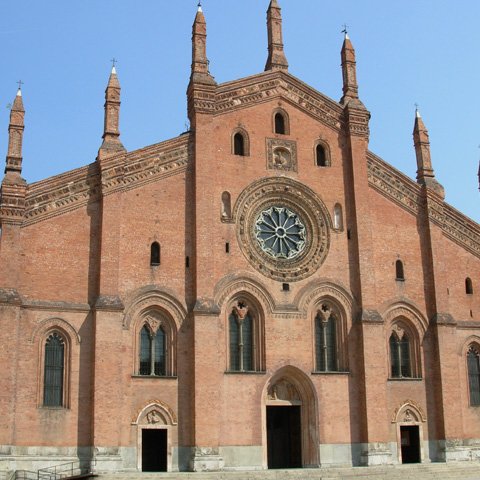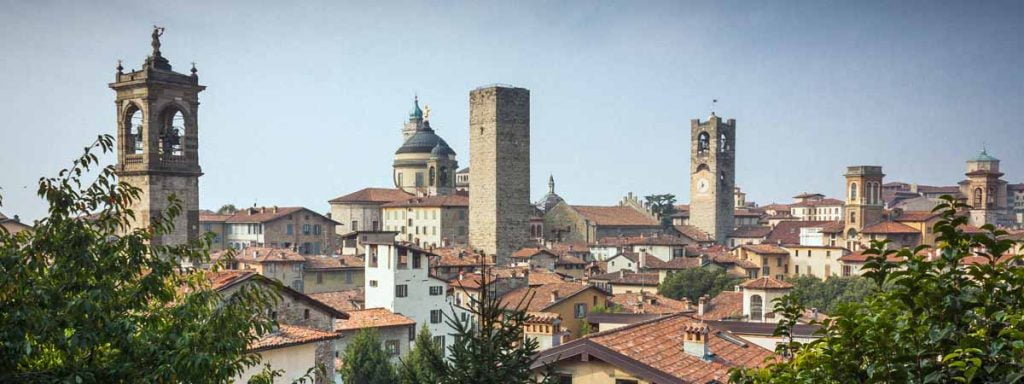Pavia is bursting with culture thanks to the city’s long history and young student population. Once known as “The City of the Hundred Towers,” Pavia was an important location as the capital of the Kingdom of the Lombards from the sixth century to the eighth century. Though only approximately six of the original towers remain intact, quite a few of the other towers were incorporated into subsequent buildings and can still be spotted throughout the city center.
Pavia is home to one of Europe’s oldest universities as well as a variety of stunning churches, remnants of Medieval towers, and fun cultural events and locations for travelers to enjoy. The university’s Orto Botanico (Botanical Garden) was once the site of avant-garde botanical experimentation. Today, nearly 30,000 students from the city and surrounding areas help give this historic locale a fresh, modern vitality.
ART
Due to the high concentration of university students in the area, Pavia is a town that features many facets of artistic culture. From art exhibitions to theatrical and musical performances to film festivals, the city hosts art-centric events throughout the year to celebrate and honor the culture of the area.
There are also traditional museums in which travelers can see artwork from centuries past. Inside the Visconti Castle, there is a fascinating museum network, called the Civic Museums of Pavia, which includes an archaeological museum and galleries that contain unique artifacts and collections from Paleo Christian, Roman, Medieval, and Renaissance times.
In the Malaspina Picture Gallery, travelers can view works by artists such as Francesco Hayez, Appiani, Landi, and more.
Fans of religious art will enjoy Pavia’s Cathedral and famed Certosa monastery. Both are complete with frescoes, paintings, and sculptures of religious significance.
Famous artists who were born in or lived in Pavia include painters Tranquillo Cremona and Giacomo Trecourt.
ARCHITECTURE
The architecture of Pavia is one of the city’s biggest draws. Throughout the city are many examples of various architectural styles, all rooted in the rich history of the city.
Religious travelers and those with an appreciation for architecture will enjoy admiring the various churches throughout the city.
One of the most important churches is the Cathedral of Pavia. Built in 1488, it features a central dome that is nearly 330 feet high. In fact, this dome is the third largest in all of Italy. Near the Duomo was the Civic Tower, whose collapse in 1989 fueled the efforts which ultimately would save the famed Leaning Tower in Pisa from collapsing as well.
For some, the Romanesque Church of San Michele is even more noteworthy than the Cathedral of Pavia. In fact, it is on this site that Lombard Kings were crowned during the Middle Ages, including Holy Roman Emperor Frederick Barbarossa. The exterior of the church features Romanesque elements distinctive of the Lombard style. The current church was actually built on the site of a previous church after it was destroyed. One of the defining characteristics of the church is the use of sandstone, which gives the building a unique coloring.
Another church with exceptional architecture is the Basilica of San Pietro in Ciel d’Oro, which is known for its Romanesque architecture and also for serving as the home of the tomb of St. Augustine. It is believed to be one of the oldest churches in Pavia. The interesting name, which mentions a “Golden Sky,” derives from a previous golden ceiling that is no longer present.
The Church of San Teodoro stands out due to its façade made of red bricks. The origins of the church can be traced back to the early twelfth century, and it is notable for its Romanesque style. Historically, this church was attended by the city’s fishermen due to its proximity to the Ticino River. Inside, travelers can admire frescoes by Bernardino Lanzani.
Though not a church, the Certosa di Pavia – a monastery complex – is a wonderful religious site in Pavia, and it is possibly the most famous monument in the Pavia area. It features an elaborate façade and stunning Gothic architectural elements, which to some may be reminiscent of the Duomo of Milan because, in fact, the Certosa was designed by the same architects as the Duomo. The complex has become a symbol of the Renaissance in Pavia. The grounds are certainly worth exploring, while the interior chapels feature frescoes by Perugino and Bernardino Luini.
For a walk into Pavia’s history, visit Castello Visconteo – a large castle made with red bricks which features a walled garden and the city’s Civic Museum. The structure, commissioned by Galeazzo II Visconti during the fourteenth century, was actually not meant to serve as a fortress, but as a residence for the noble court. The elegant rooms retain some of the original frescoes and the interior museum features interesting art displays.
There are also remnants of some of Pavia’s medieval towers that shape the city’s skyline. Though they are closed to the public, their presence evokes memories of the area’s time as the capital of the Kingdom of the Lombards.
LITERATURE
Since Pavia is a university town, there is a deep appreciation for education and literature embedded in the city’s culture. Collegio Ghislieri, or Ghislieri College, features a 100,000-volume library. It is the third largest library in Northern Italy. Also worth noting is the University Library, which is among the oldest public libraries in the country.
Famous figures of literature who lived in and took inspiration from Pavia include writer and poet Ugo Foscolo, writer Dante Troisi, and Greek poet Dionysios Solomos.
CINEMA
Though not as much of a cinematic draw as northern neighbor Milan, several Italian movies have been filmed in Pavia over the decades. Some of these films include Il Cappotto (1952), I sogni nel cassetto (1957), I girasoli (1969), Le cinque giornate (1973), Squadra volante (1974), Fantasma d’amore (1981), Facciamo paradiso (1995), Il mio domani (2011),
MUSIC
Teatro Fraschini is a must-see location in Pavia for fans of live music and creative performances. Built in 1700, the theatre was recently restored. However, it maintains unique design elements such as a bell-shaped parterre and frescoes throughout the interior. It was designed by Antonio Galli Bibiena, a famous stage designer of the eighteenth century. Visitors to the theatre from October to January can take in a show there. From opera performances to ballet dances to classical orchestral music performances, it is a wonderful location to soak up music and art in Pavia.
Important musicians who were born in Pavia include guitar player and composer Francesco Corbetta, opera singer Claudia Muzio, and singer-songwriter Max Pezzali.
SCIENCE
To experience some of Pavia’s history in science, travelers can visit the local university’s campus to walk through the university museum. Within the museum are relics that tell the story of the institution as well as unique anatomical pieces, including the preserved head of anatomy pioneer Antonio Scarpa.
For a tamer scientific experience, visit Pavia’s Academy Museum, Botanical Gardens, and Natural History Museum. Inside the Visconti Castle there is also the Archaeological Museum.
Famous scientist Gerolamo Cardano was born in Pavia, and the inventor of the battery, Alessandro Volta, lived in Pavia and was a professor of physics at the University of Pavia for more than two decades.
Several Nobel Prize winners have also taught at the university including Camillo Golgi, who won the 1906 Nobel Prize in Medicine, Giulio Natta, who won the 1963 Nobel Prize in Chemistry, and Carlo Rubbia, who won the 1984 Nobel Prize in Physics.
Travelers seeking a cultural vacation in Northern Italy should certainly make a point to visit Pavia. From historic medieval towers to expansive art museums and the legendary Certosa Monastery complex, there are plenty of fascinating sights to keep travelers entertained.
Don't just see Italy, live it.
Your dream trip to Italy has never been closer
No more endlessly scrolling travel sites. Our travel experts will craft the perfect, one-of-a-kind trip just for you.

300+
DESTINATIONS
We offer more Italian destinations than any travel site. Do and see more with Trips 2 Italy.
1 (of a kind)
ITINERARIES
Because your dream trip to Italy should be designed for you, not for the masses.
100%
PEACE OF MIND
From flights and accommodations, to food and activities - we take care of every detail.






